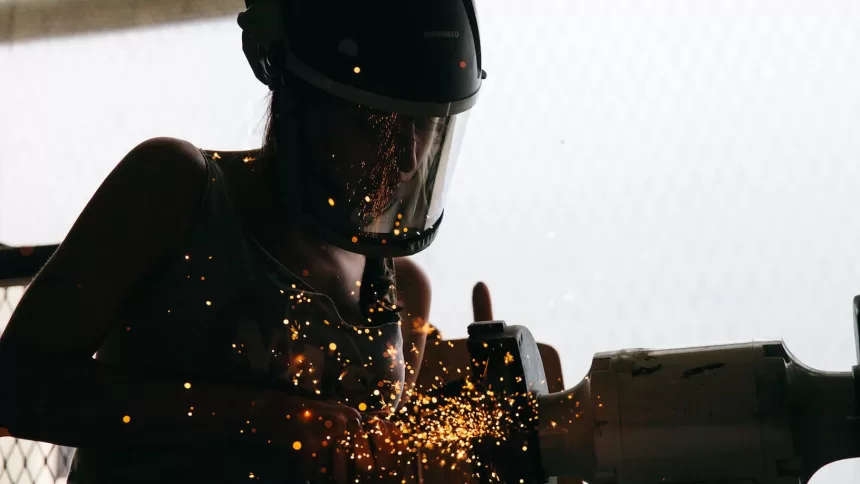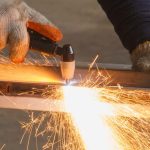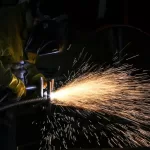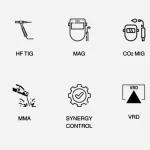Plasma cutting is a widely used and efficient method for cutting metal in various industries. It offers precision, speed, and versatility, making it a popular choice for fabricators, manufacturers, and construction companies. However, like any process, there are ways to enhance its efficiency further. In this article, we will explore 10 effective strategies to improve plasma cutting efficiency and optimize your cutting operations
10 effective strategies to improve plasma cutting efficiency and optimize your cutting operations
Welding Town
.
1. Choose the Right Plasma Cutter
Selecting the appropriate plasma cutter for your specific cutting requirements is crucial. Consider factors such as material thickness, cutting speed, and power capabilities when choosing a plasma cutter. Investing in a high-quality, well-matched machine will significantly impact the efficiency and quality of your cuts.
2. Maintain and Upgrade Consumables
Regularly inspect and replace worn-out consumables, such as nozzles, electrodes, and swirl rings. Maintaining these components ensures consistent and efficient cutting performance. Additionally, consider upgrading to high-performance consumables that can extend the life of your torch and enhance cutting speed.
3. Optimize Gas Selection
Choosing the right gas for your plasma cutting process can make a substantial difference in efficiency. Different gases have varying effects on cut quality, speed, and dross formation. Conduct trials with different gas combinations to identify the most suitable one for your specific applications.
4. Adjust Cutting Speed and Amperage
Fine-tuning cutting speed and amperage settings can significantly improve efficiency. Running the torch at the optimal speed and amperage for the material thickness and type ensures cleaner cuts and reduces unnecessary heat exposure.
5. Use Proper Pierce and Lead-In Techniques
Utilize appropriate pierce and lead-in techniques to initiate the cutting process smoothly. Proper pierce delay, pierce height, and lead-in length will minimize material distortion and improve cut quality, especially for thicker materials.
6. Clean and Prepare Materials
Clean and properly prepare the materials before cutting. Remove any surface contaminants, oils, or debris that could interfere with the cutting process. Proper material preparation ensures smooth and efficient cutting, reducing the need for secondary operations.
7. Implement CNC Automation
Integrating Computer Numerical Control (CNC) automation can enhance plasma cutting efficiency significantly. CNC systems provide precise control, allowing for automated cutting, reduced human error, and optimized nesting for material usage.
8. Opt for High-Definition Plasma Cutting
Consider upgrading to high-definition plasma cutting systems for improved efficiency and cut quality. High-definition systems offer narrower kerfs, reduced dross, and superior precision, making them ideal for intricate cuts and high-demand projects.
9. Conduct Regular Maintenance
Frequent maintenance of your plasma cutting equipment is vital for consistent efficiency. Keep the torch, gantry, and table clean, inspect the cooling system, and ensure all mechanical components are in proper working condition.
10. Train and Educate Operators
A well-trained and knowledgeable operator can significantly impact cutting efficiency. Provide your team with regular training and education on proper plasma cutting techniques, equipment operation, and troubleshooting. Well-informed operators can identify and address issues promptly, ensuring uninterrupted workflow.
Conclusion
Improving plasma cutting efficiency is a continuous process that requires attention to various factors, including equipment selection, consumable maintenance, and operator training. By implementing the strategies outlined in this article, you can optimize your plasma cutting operations, achieve higher productivity, and produce superior cut quality.
Remember that efficiency gains may vary based on the specific needs of your applications. Regularly assess your cutting processes, stay updated with advancements in plasma cutting technology, and continuously strive for improvement to stay competitive in today’s dynamic industrial landscape.











